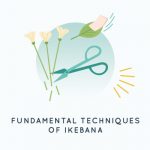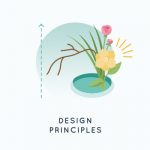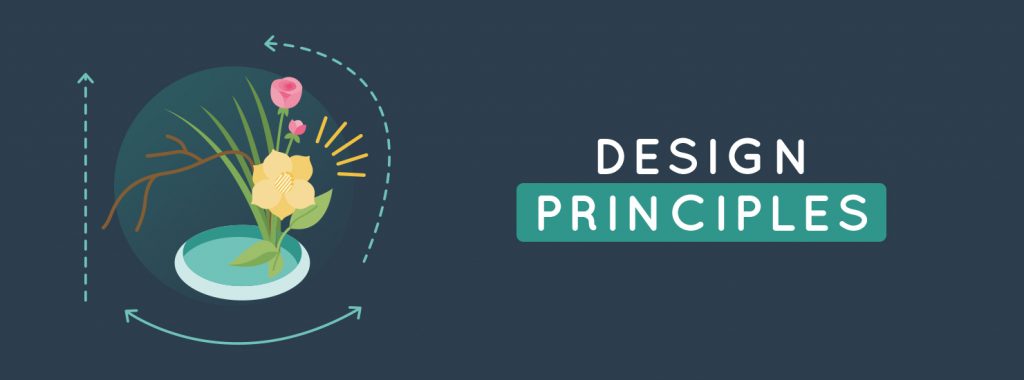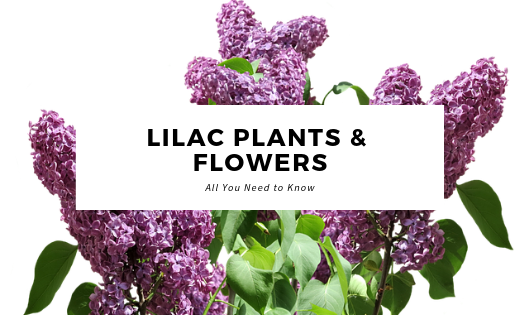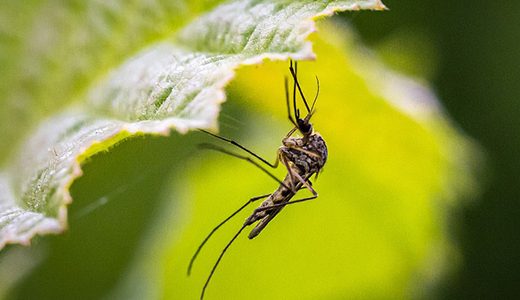Ikebana is an ancient art from Japan that has grown in popularity in the West since the end of World War II.
It’s an art form that appears simple but is actually deceptively complex.
The aim of this guide isn’t to turn you into an ikebana master after reading; that would be impossible.
Instead, we aim to help you overcome the feeling of intimidation that one feels when beginning something new like this.
In this guide, you’ll learn enough to help you figure out if ikebana is something you want to take up and if so, what the first few steps on the path should be.
Table of Contents
The History of Ikebana
Ikebana is thought to have originated in Japan in the 6th century; the same time that Buddhism arrived in Japan from China.
This isn’t a coincidence since Buddhists had long offered up flowers to Buddha at their temples. The flowers offered up in Japan began to reflect some of the principles of Buddhism.
Eventually, this new art of arranging flowers in accordance with spiritual beliefs spread to the aristocracy and these floral arrangements began to be seen in the home for the first time, perhaps in the same way that many Christians will place a crucifix somewhere near the entrance of their homes.
Being associated with Buddhism and the aristocracy, it was only a matter of time before it was taken up by the masses. By the 15th century, the floral arrangements that were initially just offerings to Buddha had become an art form known as ikebana.
In Japanese, ikebana is made up of two characters: 生 and 花
The first means life, while the second means flower. It’s for this reason that ikebana is often translated in English as ‘bring life to the flower’.
While different schools have emerged and ikebana has evolved since the early days of the art form, originally ikebana arrangements were created with a similar theme in mind; one of three lines that represented heaven, man and earth.
The Different Schools of Ikebana
As ikebana became more popular as an art form, new practitioners of the art began to deviate a little from the original form; they began to add their own way of doing things and formed their own schools of how ikebana should be done.
Today there are well over 1,000 (possibly a lot more) different schools of ikebana, each with their own way of doing things.
You can view a decent sized list of some of these over at the related Wikipedia page.
The Ikenobo School
Originating in the 8th century, well before ikebana was popular amongst commoners, the Ikenobo School is widely considered to be the origin of ikebana. In fact, the school considers its beginning to coincide with the construction of the second oldest temple in Japan.
It wasn’t until the 15th century that the first styles of ikebana, such as rikka, emerged. It was from these origins that the other styles and schools of ikebana emerged.
You can learn more about the Ikenobo School over at here.
The Ohara School
Another significant school in the world of ikebana is the Ohara School. It was founded in 1895, during the period of open trade with the West.
It was the first school to really popularise the use of shallow bowls as containers. Before this, more upright vases were considered the norm. This style eventually became known as moribana.
There are currently 125 chapters of the Ohara School in Japan, and over half of that overseas.
You can read more about this school on their official website.
The Sogetsu School
The Sogetsu School is one of the newer of the larger schools, being founded in 1927 by Sofu Teshigahara.
One of the reasons it is so popular today is because of the main reason that the school was founded in the first place. Teshigahara felt that the strict rules surrounding ikebana at the time were constricting and limited personal expression; something he felt was at the heart of the art form.
Compared with the other schools, Sogetsu is very open-minded and flexible, so it’s not surprising that this school is one of the most popular in the West.
The two styles they most commonly use are nageire and moribana, both of which will be covered in the following section on ikebana styles.
To learn more about the Sogetsu School, visit their official website.
Different Styles of Ikebana
With a history stretching back to the 6th century, it’s not a shock to learn that there are lots of different styles of ikebana.
In this section, you’ll learn about some of the more common ones so you can get a feel for which type of ikebana you’d most like to create.
Rikka
Rikka (standing flowers), was one of the first styles to be developed and was done so as a Buddhist interpretation of nature. One of the things that set this style apart from the others is the use of seven or nine branches that are said to represent nature.
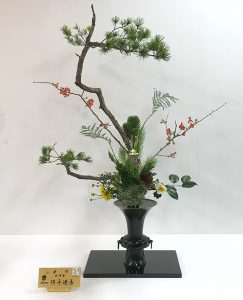
Moribana
Moribana (meaning piled-up flowers) is a style that was introduced by the Ohara school in the late 19th century.
Moribana arrangements use shallow, bowl-like containers that allow the artist to create a design that flows outwards, which is different to the other styles of ikebana that are usually vertically arranged.
There are three types of moribana styles in use. The upright style is the one you’re most likely to see. The slanting and water-reflecting styles, while popular, aren’t quite as common as upright.
There are some better descriptions and images on the Ohara School’s website.
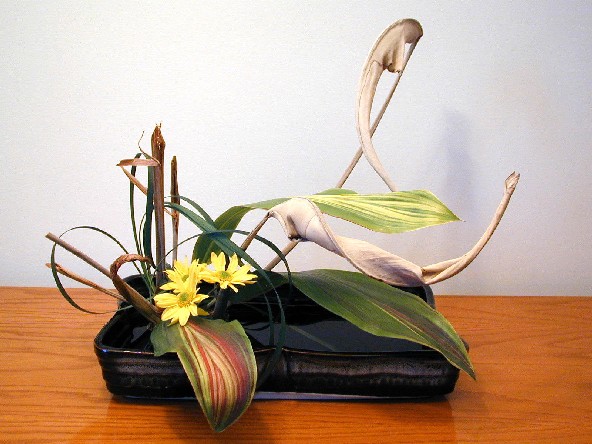
Pic Credit: [Creative Commons]
Nageire
The first difference you’re likely to notice between moribana and nageire ikebana is that while the former tends to be low-lying and flat, the latter stands tall in a vase rather than a bowl.
Because of this, nageire arrangements are placed in vases and held in place with various techniques (covered in a latter section!) rather than held together with pins, like in moribana.
Similarly to moribana though, nageire arrangements can also be found in three main styles; upright, slanting and cascading.
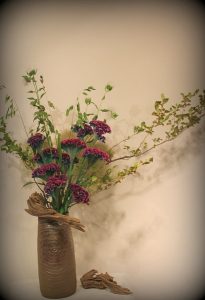
Pic credit By GustavoReinoso7777 – Own work, CC BY-SA 4.0
Shoka
This style of ikebana came from the Ikenobo School and is thought to be a simplified version of rikka. As with rikka, shoka style consists of three main lines; the central “truth” branch, several supporting branches, then finally branches placed at the base of the arrangement for balance.
You can read more about this style at Ikebana by Junko.

Photo by Christine Wang
Fundamental Techniques of Ikebana
Before you can begin to create arrangements of your own, there are some basic skills that you must first acquire. Without these basics, it will be hard to create anything, regardless of your imagination or creativity.
It’s also helpful to understand the environmental factors that will affect your arrangement. Ikebana, being made from flowers, last longest in environments that flowers flourish in. Some humidity is welcome and will help keep the flowers fresher for longer.
In addition, a cooler environment is preferred to a hot one, as warmer temperatures cause cut flowers to die sooner.
You should also endeavour to keep your arrangements away from smoke, strong sunlight and air conditioning.
Cutting Basics
If you’re going to be doing ikebana, one of the things you’ll find yourself doing frequently is cutting flowers. While this may seem simple to do, there are a few things to note that will make the cutting much more successful.
One technique frequently used by ikebana practitioners is known as mizukiri, or ‘water-cut’. This refers to the method of cutting stems of flowers under water to avoid air from finding its way into the stem of the flower.
Doing this will keep your flowers alive longer, so it’s important to get into the habit of doing this.
Second, you need to make sure you’re making the cut the right way. If you’re using a kenzan (we’ll explain what this is shortly) to hold your flowers in place, then you’ll want to make the cuts straight across the stem so it can be better held in place.
However, if you’re using a vase to hold your flowers, then you’ll want to use a diagonal cut so that the surface area of the cut is maximised, meaning that water will be more readily absorbed into the stem, keeping the flower alive for longer.
Trimming Basics

Another activity you’ll find yourself doing when practising ikebana is trimming. Because ikebana is always made with clean lines in mind, you’ll want to remove any twigs and small branches that are getting in the way of this aim.
Doing this is a skill, but by visualising the arrangement as you want it, then gradually trimming away leaves and smaller branches until there’s nothing more to remove, your arrangement will be greatly improved.
Also consider getting rid of leaves below the water line since they won’t really add anything to the arrangement, but could encourage the growth of bacteria.
Cleaning Leaves
It might sound a bit over the top (and if you’re just getting started it might be), but if you want to get the most out of your arrangements then it’s helpful to clean your leaves.
By applying a wet paper towel to your leaves, you’ll add a freshness that not only keeps them looking nice, but also helps to keep them alive a bit longer.
Capping & Splinting
Using a kenzan is a must for certain ikebana styles, but it’s not always possible to stick thinner stemmed flowers onto it.
When this happens, you have the option of capping your stems to allow this process to become easy.
How it works is you take your thin stem and place it into a thicker stem, which is then placed firmly onto the kenzan.
It sounds trickier than it is, once you’ve done it once or twice you’ll find that it’s very easy to do and makes your life much easier.
Another method for achieving the same goal is to use a splint. To do this, you simply take another small piece of stem and attach it to the stem that you want to arrange.
Which method you prefer depends on your personal preference as well as what materials you have on hand.
Pounding & Crushing Stems
We’ve already spoken a little about the importance of keeping your flowers alive for as long as possible. We all want that, don’t we?
By pounding and crushing the stems of the flowers you use, you’ll help elongate this process.
This is mostly necessary for arrangements with hard and fibrous stems. You greatly increase the surface area of the cut by pounding and crushing them, meaning that water can more readily enter the stem. All of this helps to increase the life of the flower at the end of the stem.
It doesn’t need to take long either. Just take a small hammer or other flat object and pound away until the ends are crushed sufficiently.
Boiling the Stems
Another technique you can use to keep your flowers alive longer is boiling the stems. By doing this, you not only make the stem take up more water, but you’ll also help to kill bacteria that might be present, which should be considered an enemy to the life of your flowers.
To do this, just grab the end of your stems and place them in boiling water for five seconds or so.
Bending & Shaping
Since ikebana is all about arranging flowers, sometimes you’ll find that the stems and branches aren’t in the shape you want. When this happens you’ll need to be able to bend and shape them to your will.
Doing this is a necessary skill and something you’ll need to get a grip on before you can confidently create whatever arrangement you want.
We found that this tutorial has some helpful tips on how to do so:
Tips & Tricks for Bending Springy Stems
Design Principles of Ikebana
Before you can put together a successful arrangement, you need to understand the design principles that make ikebana such a unique art form.
While different schools have different ideas about how to go about ikebana, there are some principles that are constant throughout them all.
The first is the principle of nature. At a basic level, ikebana is thought to be seen as a representation of the personality of the artist. How the artist sees nature is how the arrangement comes about in reality.
Ikebana is also known for its use of three main elements:
Lines
Lines are formed by the branches of the flowers used and while they’re meant to be minimal, an arrangement can have a few lines or many.
Arrangements composed of mostly vertical and horizontal lines also convey a sense of “staticness”. As do arrangements that appear to be balanced and symmetrical.
That means the opposite is also true; to create a feeling of movement, you can create arrangements that are asymmetrical or unbalanced.
Using curved lines is another way to add a feeling of movement to your arrangement.
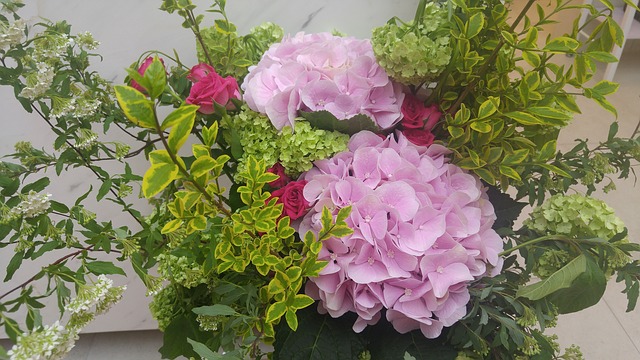
Verticality is another principle. Just as a strong, upright posture in people signifies strength and health, so it does in ikebana. The more vertical an arrangement appears, the stronger it appears because gravity affects both humans and flowers equally.
Volume
Volume is another element used in ikebana and is used to add weight and depth to the piece. When looking at various arrangements, try and understand how volume has been used to create something with a substantial feel, or something that feels a little dainty.
Focal Point
The focal point, or accent, is the final element that ikebana makes use of. It’s most often done by using a flower to attract attention.
In addition to the above elements, ikebana also makes use of positive and negative space. This is the relationship between the physical elements of the arrangement and the empty space in the gaps between the physical elements.
Look at some of the examples of ikebana below and you’ll begin to get an appreciation for the use of positive and negative space.
The final principle to consider for ikebana is the actual materials used. While there are generally few hard rules here, most ikebana arrangements make use of just 2-3 different types of plant material.
In line with the other principles, more is often seen as less here.
When selecting your materials, consider the shape, colour, density and texture.
Selecting your Container
When you start thinking about the materials to use for your arrangement, you need to think beyond the organic.
The container you use has a large impact on the overall arrangement, so a fair amount of thought must be put into it.
The first is the style of the container. For vertical style ikebana such as nageire, you’ll need to use some kind of vase.
For a flat style such as moribana, you’ll need to use a container that more closely resembles a basin.
Regardless of what style your arrangement is, the shape and the colour of your container is an important consideration.
Does the shape of the container add to the appeal of the arrangements? Or does it detract? Does the colour match the arrangement or does is clash? While it might seem confusing at first, with experience it’ll get clearer what to use.
The size is another dimension to consider. The correct size is one that is neither too large or too small. The container shouldn’t be so large that it distracts the viewer from the flowers, but neither should it be so small that it looks out of place. Proportion is important.
When in doubt, try and make something that is harmonious in all the important dimensions.
Container Ideas
When it comes to what to use as your container, you’re only limited by your imagination. You can stick with conventional vases and basins for your arrangements, or you can go for something a little different; there are no hard and fast rules here.
Traditional arrangements used vases for their containers because that’s what was used for storing flowers at the time. But modern arrangements can use whatever they want.
You can create some wonderful arrangements by thinking outside the box.
Some modern artists have used things such as teapots, coffee cups and other assortments of items that you can find around your home.
As long as it is capable of holding up your arrangement and fulfils the earlier criteria then you can safely use it as a container.
Tools & Materials
Some hobbies and artforms require a significant investment when it comes to the tools and materials needed.
Ikebana is pretty simple though.
With a few pieces of quality gear, you can get started making high-quality arrangements.
The first thing you’ll need is a good pair of scissors. You can use a pair of Japanese scissors, or you can grab something from your local hardware store. As long as they’re sharp enough to cut the stems of your material.
When it comes to the scissors you use, maintenance is the most important thing. This is particularly true of any expensive pair you might buy because you’ll want to prevent them from rusting.
Because residue from stems can result in rust, it’s important to clean your scissors after each use. Wash them, then carefully dry them before storing them in a case of their own. Doing this will ensure that your scissors last a lifetime.
Another important piece of equipment for certain types of arrangements is a kenzan. This is similar to a western ‘floral frog’. Stems are stuck onto the pins of the kenzan and kept in place.
Depending on the types of arrangements you create, you’ll also need to get your hands on some wire. This is for keeping certain stems in place and keeping your arrangement together.
Once you’ve got your hands on these little bits and pieces, then you have all the material things that you need to create your first display.
Creating Your First Arrangement
Once you’ve got your hands on some basic materials and you’ve figured out some of the fundamental techniques of ikebana, you’re ready to create your first arrangement.
There are many things to consider when creating a display, but the first stage is one of imagination. Before you can set about creating something, you first need to envision it, you need to figure out what you’re going to design.
When you are just starting out in ikebana, this can be quite a challenge because you don’t really know what’s possible.
The cure for this is to view as many beautiful arrangements as possible and figure out which elements of each you like. Once you’ve got a library of arrangements in your brain, it should be much easier to come up with your own ideas.
This process isn’t about copying arrangements you like, but to just develop your intuition. Once your intuition is primed and you’ve got a few things in mind, we can begin with the first step.
While many beginners believe that the materials are the correct place to start with your arrangement, most experts would disagree.
They believe that the correct place to start your process is with the site. Their thinking is that since the site can influence your design, it’s best to start here.
Look at the location of the site and whether or not it has any meaning of its own. In Japan, arrangements were typically placed in the entrance of a home as a way of heightening the importance of the arrangement.
Look at the size of the space; this will help dictate how large your arrangement should be.
Consider the colours and textures of the space as well. One type of arrangement will work well in a brightly coloured, smooth space, while another entirely will work in a darker, rougher space.
Also, consider the lighting; some arrangements are better suited for low light than others and vice versa.
Once you’ve decided on your site, the next step is to figure out what container you’re going to use.
Because all you know about your arrangement at this point is the location, you need to make sure that the container and your location will work together in harmony.
Inspiration
When you’re just getting started in ikebana, one important thing to do is ensure you get exposure to plenty of high-quality arrangements. These can act as inspiration for your own arrangements down the track.
Fortunately, we’re lucky enough to be able to show off the work of three special ikebana artists.
Ping Block
Australia based Ping has been a student of ikebana since 1996, has taught it since 2001 and hails from the Sogetsu School.
You can learn more about her at her website: https://www.ikebanawithping.com and view her YouTube channel: https://www.youtube.com/c/IkebanaWithPing
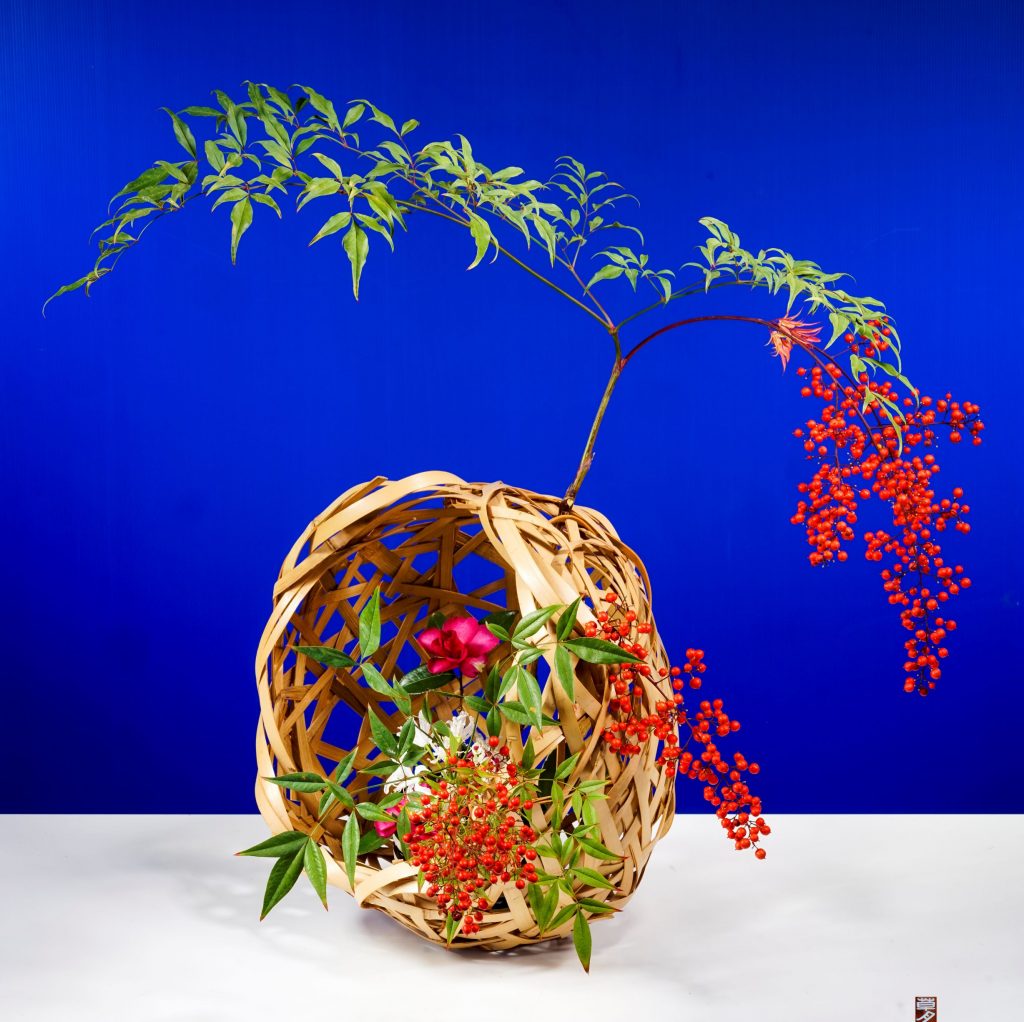
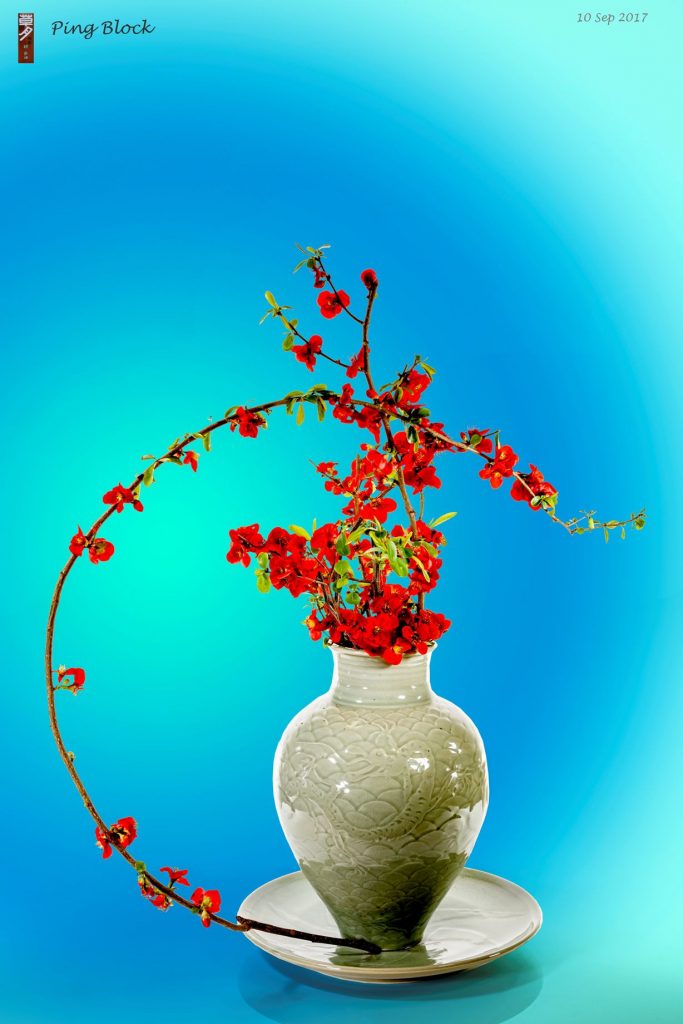
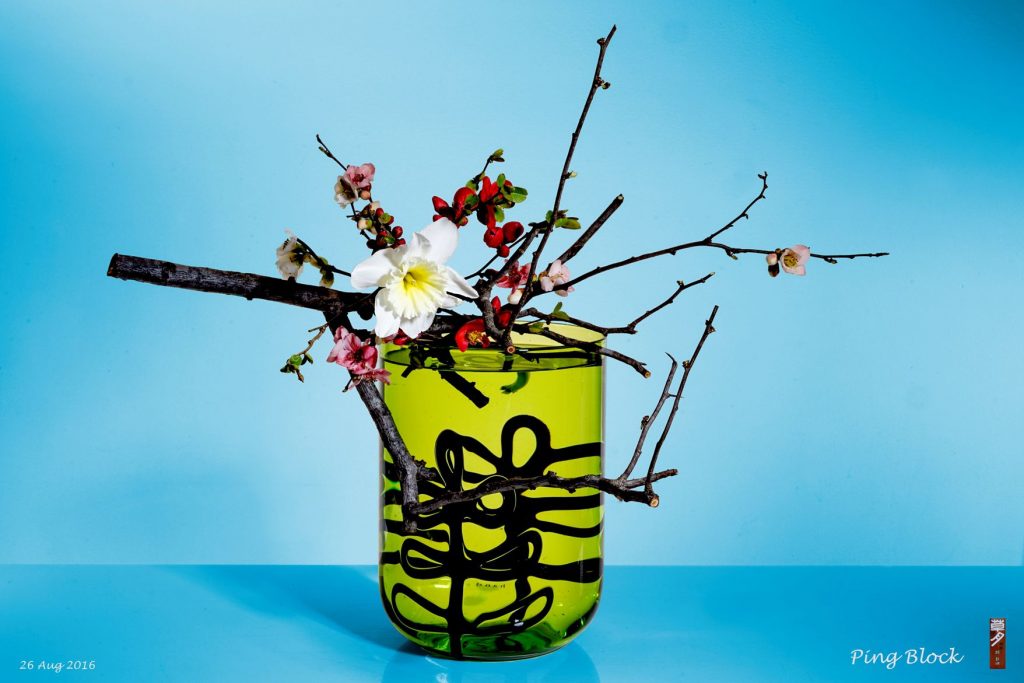
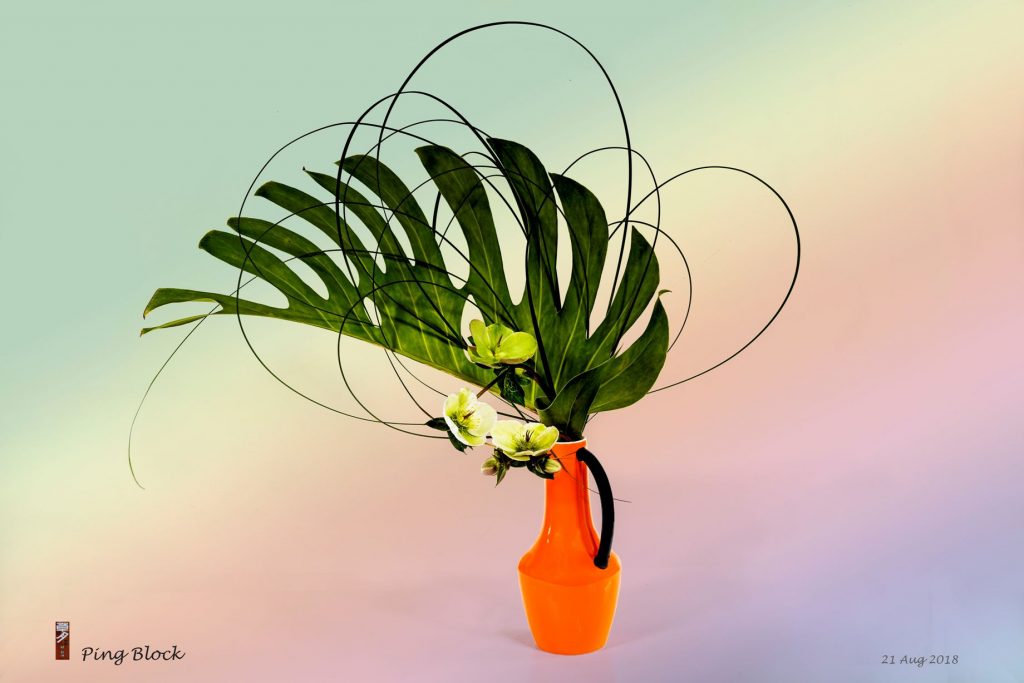
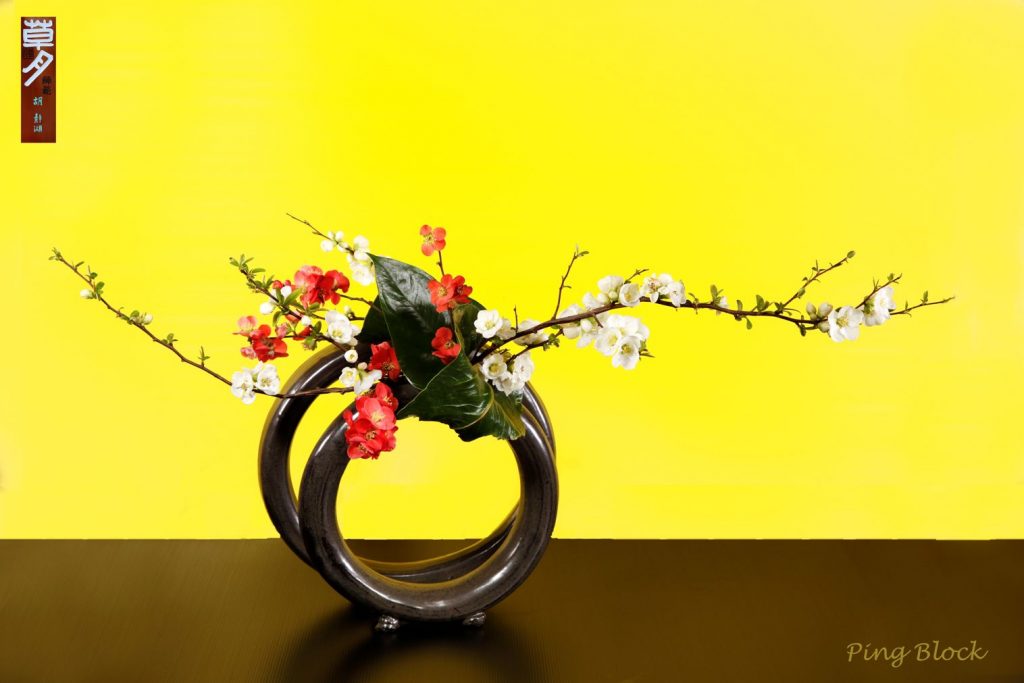
Lily Karmatz
Another member of the Sogetsu School, Lily Karmatz is based in Brisbane and has been teaching at the local Sogetsu School there since 1998.
You can learn more about her at her website: http://www.artislily.com/
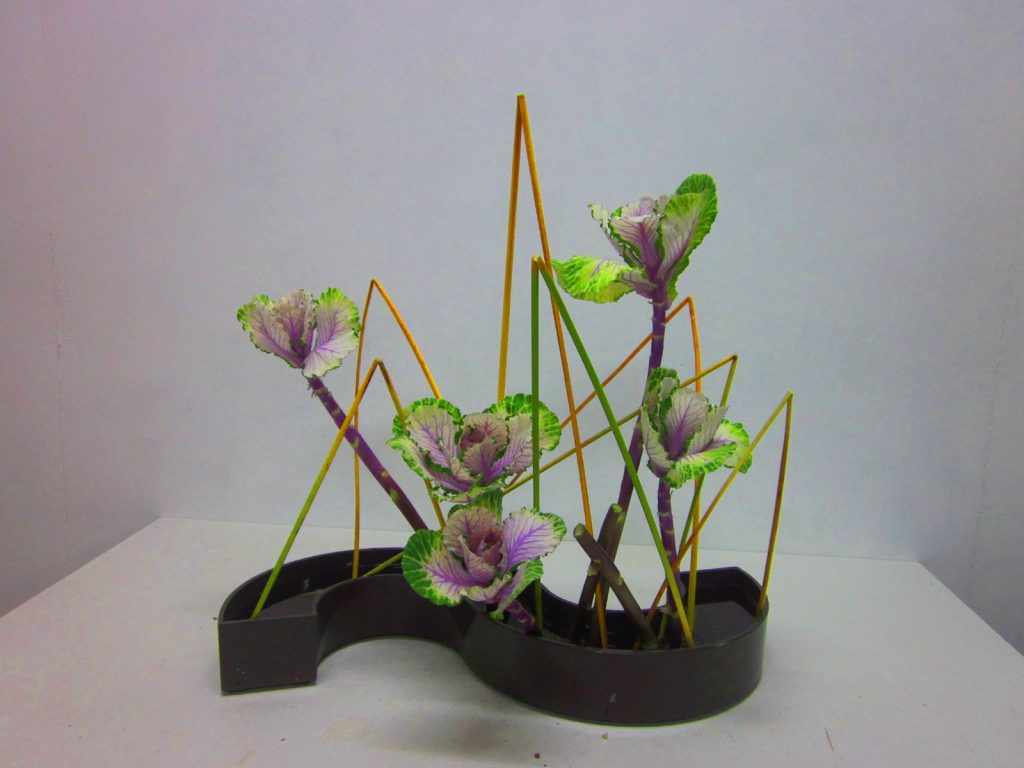

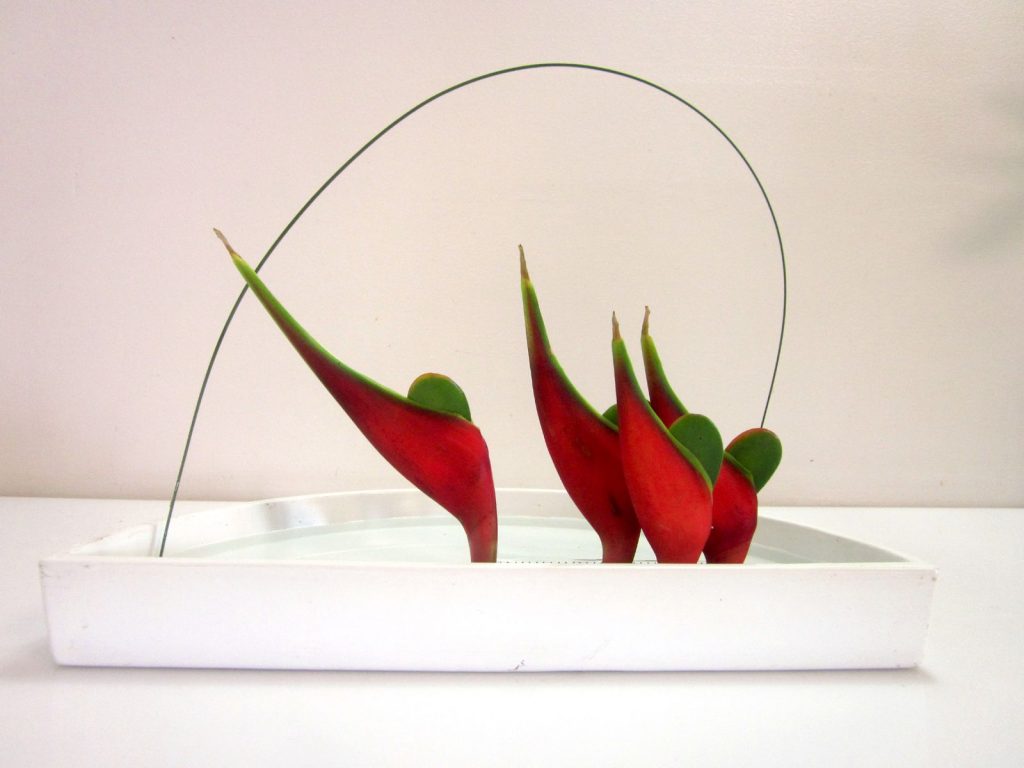

Toko Tazawa
Also from the Sogetsu School, Japanese born Toko Tazawa is now based in Melbourne and has more than 15 years as an ikebana instructor.
You can learn more about her here: https://tokoikebana.com/
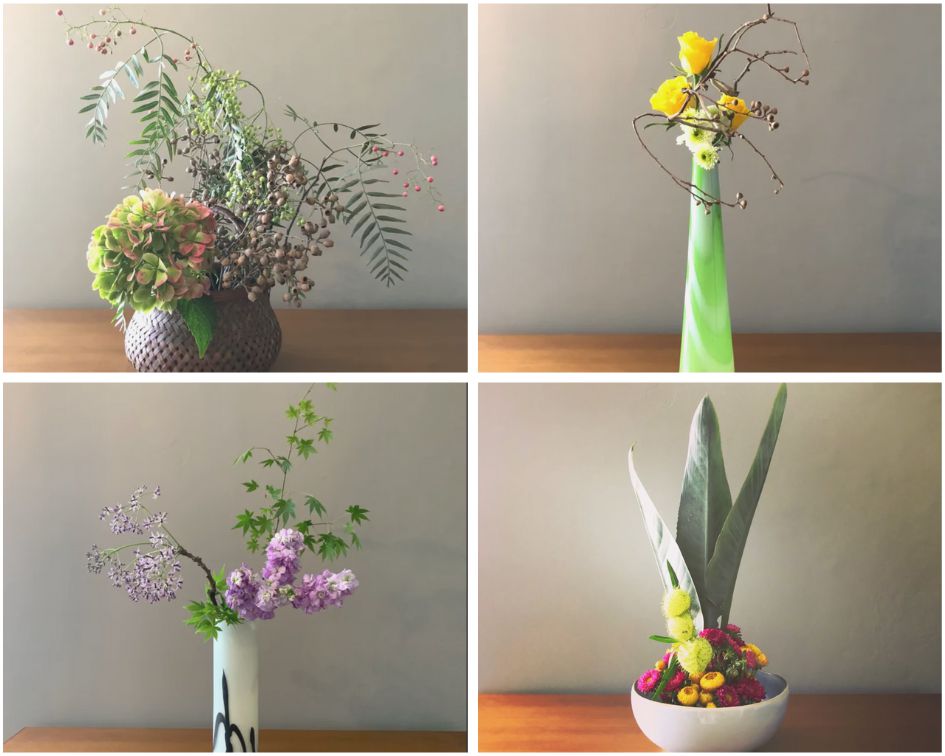
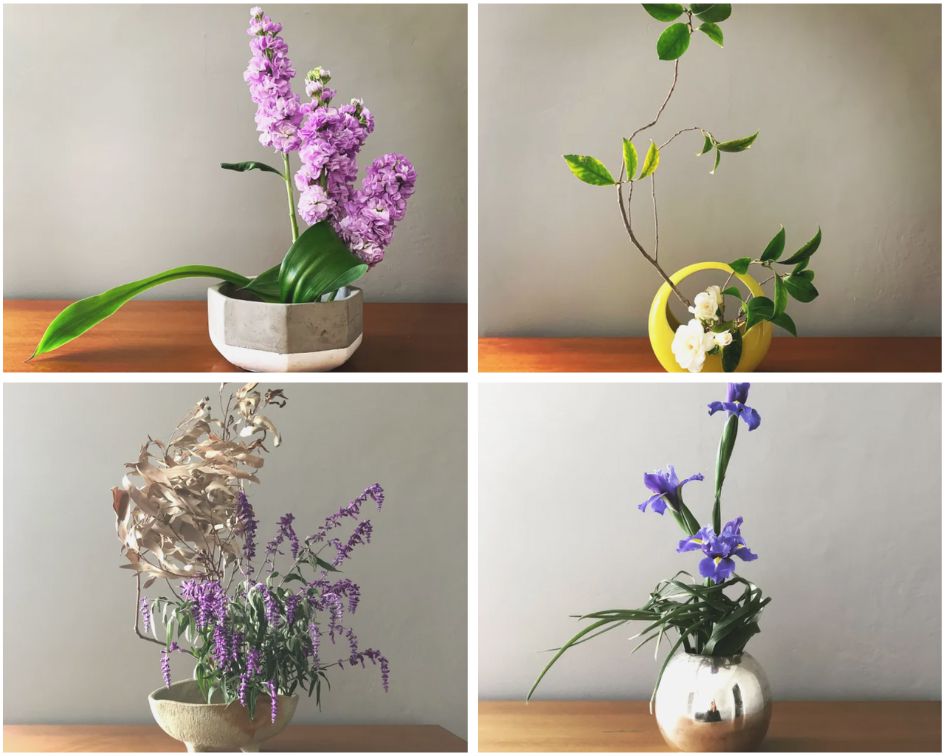
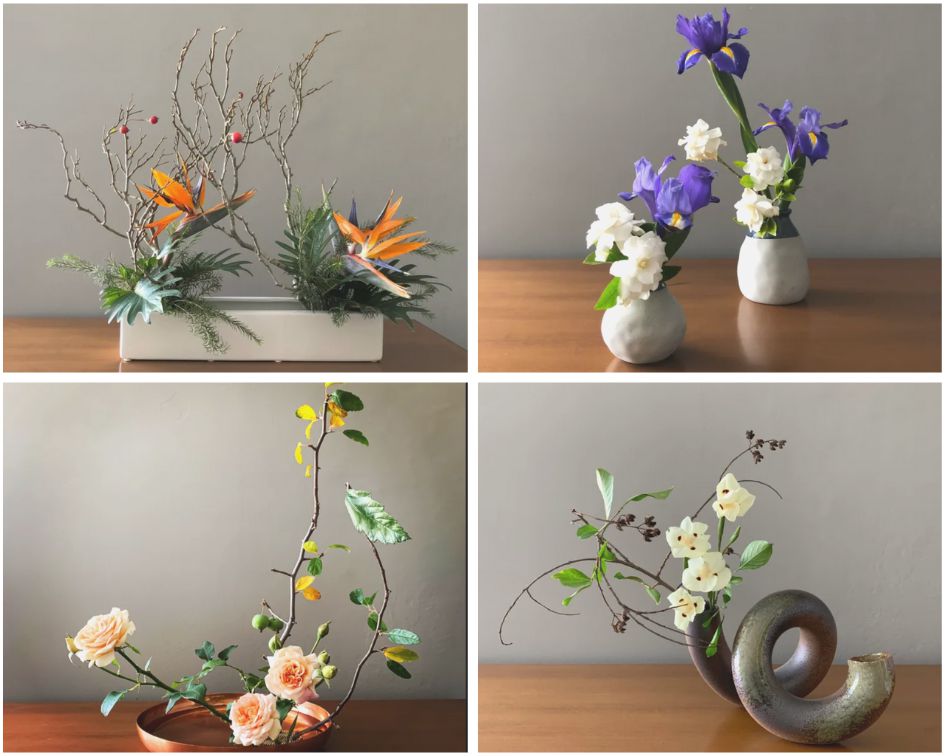
Here are some related questions that we think you might find useful.
Related Questions
What is ikebana used for?
It is said that making ikebana arrangements is calming for the mind and provides clarity of thought. It’s also considered an accomplishment to be able to make these arrangements.
How long do ikebana arrangements last?
Ikebana arrangements vary in how long they last. It depends on the materials used, the environment they sit in, the water available and the care taken in maintaining the arrangement. Some last for days, while others can last for weeks.
What kind of flowers are used in ikebana?
Because ikebana originated in Japan, the flowers most commonly associated with it are those that are popular in Japan; chrysanthemum, camellia and peonies, for example. That said, there’s no restriction on what flowers you can use.
How many schools of ikebana are there?
The truth is that no one knows exactly how many there are, because the smaller ones come and go. There are at least 1,000 different schools of ikebana.
Where did ikebana originate from?
Ikebana originated in Japan in about the 6th century where it was associated with the Buddhist practice of presenting flowers at temples. By the 15th century, it was considered an art form of its own. You can learn more about the history of ikebana in the first chapter of this guide.
Who created ikebana?
No one person created ikebana. The act of offering flowers to Buddhist temples is one that goes back a long way in Japan. As it became more popular, the aristocracy adopted it in their homes and it eventually trickled into the homes of the common people.
What does ikebana mean in English?
Ikebana is made up of two characters in Japanese that mean ‘life’ and ‘flower’, so ikebana is often translated as ‘bring life to the flower’.
Is ikebana capitalised?
No, ikebana is not capitalised. In English, we only capitalise proper nouns, which as we know are words used to name specific people or places.
What's the difference between ikebana and kado?
Ikebana and kado have the same meaning. Kado means the way of flowers, in the same way that bushido means the way of the warrior.
Parting Words
We hope you found this guide useful and it inspired you to create an arrangement of your own.
Do you have any questions that weren’t answered?
Is there something we should add to the guide to make it more valuable?
If so, tell us in the comments section below!




